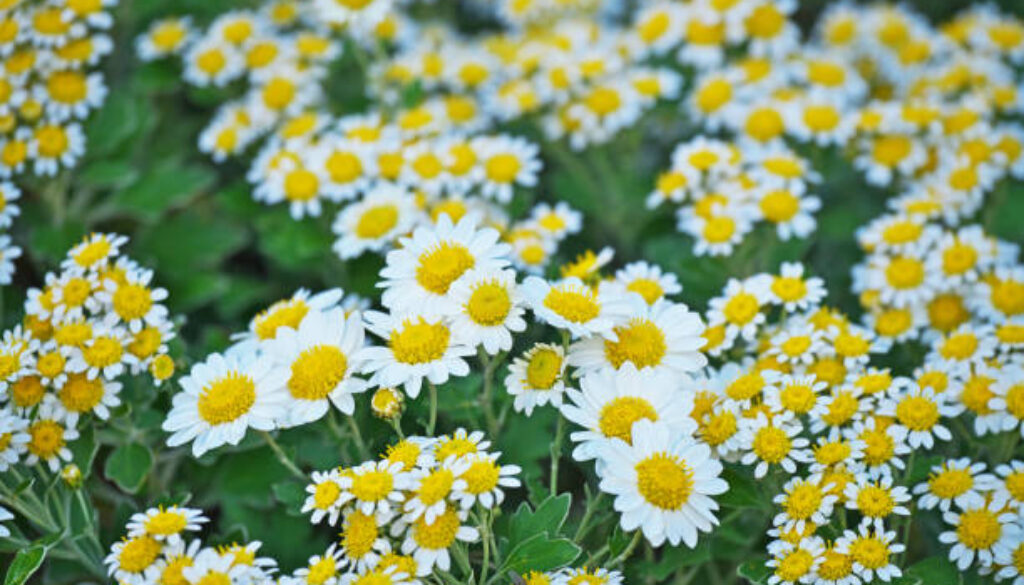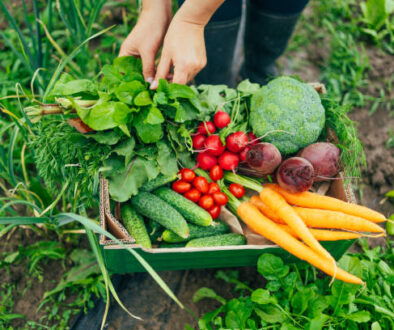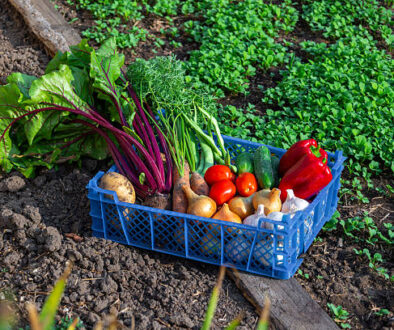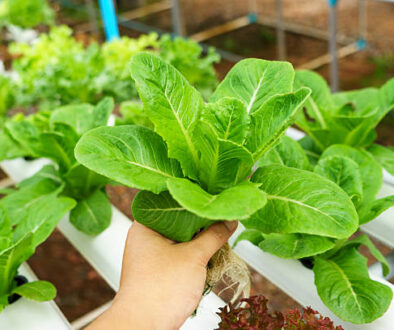7 Medicinal Plants You Should Plant In September
This post may contain paid and/or affiliate links. I may earn a small commission at no extra cost to you.
When September rolls around, most people think gardening season is over.
The summer harvest is done, the heat is fading, and those tomato plants look more tired than you feel after a long workday.
But here’s the secret: your fall garden might actually be the best time to plant some of the most powerful medicinal plants you’ll ever grow.
I’m talking about healing herbs and medicinal plants that not only survive but actually thrive in cooler weather.
If you’ve ever dreamed of creating your own herbal medicine garden, September is the perfect time to get started.
Think of it like stocking your own little pharmacy right in the backyard—a medical garden that doesn’t just look green and pretty, but actually supports your health day by day.
Let’s walk through why these plants belong in your garden, how to grow them, and the best ways to use them.
I’ll also share a few garden companion planting tips to make sure your plants grow strong side by side.
Why Plant Medicinal Herbs in a Fall Garden?
Most people forget that fall gardening has its own advantages.
Cooler temperatures mean fewer pests, less watering, and less stress on plants overall.
For many healing plants, this is exactly the kind of environment they love.
Think of fall as a reset button for your soil and your health.
Instead of letting your beds sit empty, you can fill them with fall medicinal plants that give you a head start on natural remedies for the months ahead.
Plus, many of these plants are perennials, so once you set them up, they’ll return year after year—like loyal friends waiting to support you.
7 Medicinal Plants to Grow in Your Fall Garden
1. Chamomile – The Calming Healer
Chamomile isn’t just for tea lovers. This little flower is like nature’s stress reliever.
Grow it in your fall garden, and you’ll have your own supply for calming teas, soothing skin rinses, and even natural sleep support.
Chamomile prefers cooler weather, so planting in September is perfect. Pair it with mint in your garden companion planting setup since they grow well together and can both be used for digestive health.
2. Echinacea – The Immune Booster
If you want your herbal medicine garden to really work for you during cold and flu season, echinacea is a must.
Known as one of the strongest healing herbs, echinacea helps support your immune system and fights off seasonal sickness.
Plant it now in well-drained soil, and it’ll come back each year stronger than before.
In your medicinal herbs garden, echinacea pairs beautifully with calendula, both visually and medicinally.
- Garlic – The Natural Antibiotic
Garlic might be the easiest and most powerful thing to add to your medical garden this fall.
Not only does it flavor your food, but it’s also been used for centuries as a natural antibiotic and heart health supporter.
Fall is actually the best time to plant garlic—cloves go in the ground now, and by spring, you’ll have strong bulbs ready to harvest.
Bonus tip: Plant garlic near roses or fruit trees as part of garden companion planting; it helps keep pests away.
4. Calendula – The Skin Soother
Calendula is one of the prettiest medicinal plants you can grow.
Those bright orange and yellow flowers aren’t just cheerful—they’re powerful healing plants for cuts, scrapes, burns, and even skin rashes.
Plant calendula in your fall garden, and you’ll have blooms that can be harvested for salves, oils, or teas.
Calendula thrives when planted with tomatoes or beans, making it a perfect companion plant.
5. Mint
Every good herbal medicine garden needs mint. It’s refreshing in tea, soothing for digestion, and even helpful for easing headaches.
Mint is also a hardy perennial, which means once you plant it, it pretty much takes care of itself.
But here’s a tip: mint spreads aggressively. So if you’re adding it to your medicinal herbs garden, either keep it in a pot or plant it near chamomile or lemon balm where its growth won’t overwhelm your other plants.
6. Sage – The All-Purpose Healer
Sage has a reputation that stretches back centuries. This herb supports sore throats, helps digestion, and even has antibacterial properties.
It’s one of those healing herbs that belongs in every medical garden.
Fall is a great time to establish sage, especially if you live in a region with mild winters. Pair it with rosemary in your garden companion planting for a strong, fragrant healing duo.
7. Lemon Balm – The Mood Lifter
Last but not least, lemon balm is the happy herb of your fall garden.
It supports calm, eases anxiety, and even promotes better sleep. You can use it in teas, tinctures, or fresh right from the garden.
It’s also a bee magnet, which is great for pollination.
In terms of garden companion planting, lemon balm does well with fruit trees and squash, helping keep pests away while boosting growth.
Garden Companion Planting Tips
If you’re building a medicinal herbs garden, don’t just stick plants randomly in the ground.
Garden companion planting is like matchmaking for plants—it helps them grow stronger, resist pests, and even taste better.
Here are a few ideas:
- Plant garlic near roses to ward off aphids.
- Pair chamomile with mint to boost digestive benefits.
- Add calendula near beans or tomatoes for natural pest control.
- Grow sage with rosemary for a hardy, fragrant pair.
- Keep mint in a separate container so it doesn’t overwhelm others.
When your plants support each other, your herbal medicine garden becomes healthier and easier to maintain.
How to Use Your Healing Plants
Planting is just the start. Once your fall medicinal plants grow, here’s how you can put them to work:
- Chamomile → calming tea, sleep aid, skin rinse
- Echinacea → tinctures or teas for immune support
- Garlic → raw or cooked for daily health, infused oil for earaches
- Calendula → salves for cuts and burns, soothing teas
- Mint → fresh leaves in tea, headache relief, digestive support
- Sage → throat gargles, cooking, antibacterial teas
- Lemon Balm → calming teas, sleep support, stress relief
This is where your herbal medicine garden turns into your personal medical garden—not just beautiful, but incredibly useful.
Mistakes to Avoid in a Fall Medicinal Herbs Garden
- Planting too late – Get your seeds or starts in the ground by mid-September for the best results.
- Ignoring soil prep – These healing herbs need well-drained, nutrient-rich soil. Don’t just plant in whatever’s there.
- Overcrowding – Even in garden companion planting, each plant needs space to thrive.
- Forgetting perennials – Many of these plants come back year after year, so plan your garden layout with that in mind.
- Not harvesting properly – Harvest in the morning after dew dries for the most potent oils in your medicinal plants.
Serving Your Family With a Healing Garden
The best part of a herbal medicine garden is that it keeps on giving.
You don’t just have herbs for teas—you’ve got natural remedies, healthier meals, and a garden that works double duty as a medical garden.
Picture this: it’s December, the air is chilly, and someone in your family feels a cold coming on.
Instead of rushing to the pharmacy, you walk outside, snip some echinacea and chamomile, and brew a soothing tea.
That’s the real magic of planting healing plants in your fall garden.
Storing and Preserving Your Fall Healing Plants
Don’t worry if you can’t use everything fresh. Most medicinal herbs dry beautifully for later use.
Hang bunches upside down in a dry, airy place, or use a dehydrator.
Store them in glass jars away from sunlight, and they’ll stay potent for months.
For oils and salves, infuse herbs like calendula, sage, or lemon balm into olive or coconut oil.
Strain after a few weeks and you’ll have your own natural first aid kit.
Conclusion
Starting a fall garden doesn’t just give you something to do in September; it gives you a medicinal herbs garden that supports your health all year long.
With plants like chamomile, echinacea, garlic, and lemon balm, you’re not only growing food, you’re growing medicine.
By using garden companion planting and choosing hardy healing plants, your herbal medicine garden can thrive with very little effort.
It’s like having a natural pharmacy just a few steps away.
So grab some seeds, roll up your sleeves, and make this fall the season you start building your own medical garden.
You’ll thank yourself every time you reach for a cup of calming tea or a homemade salve straight from your backyard.



